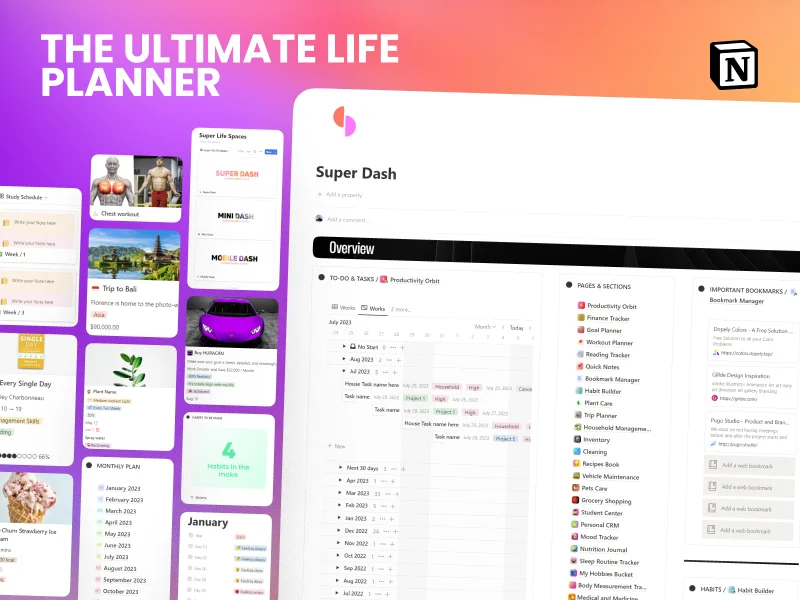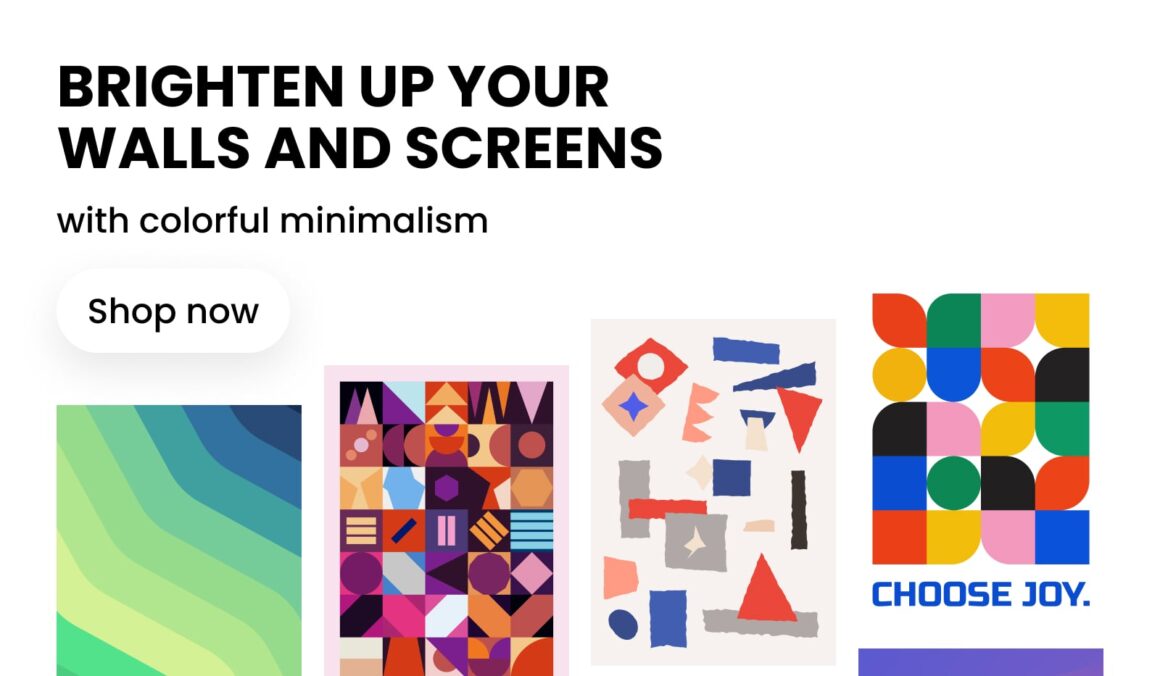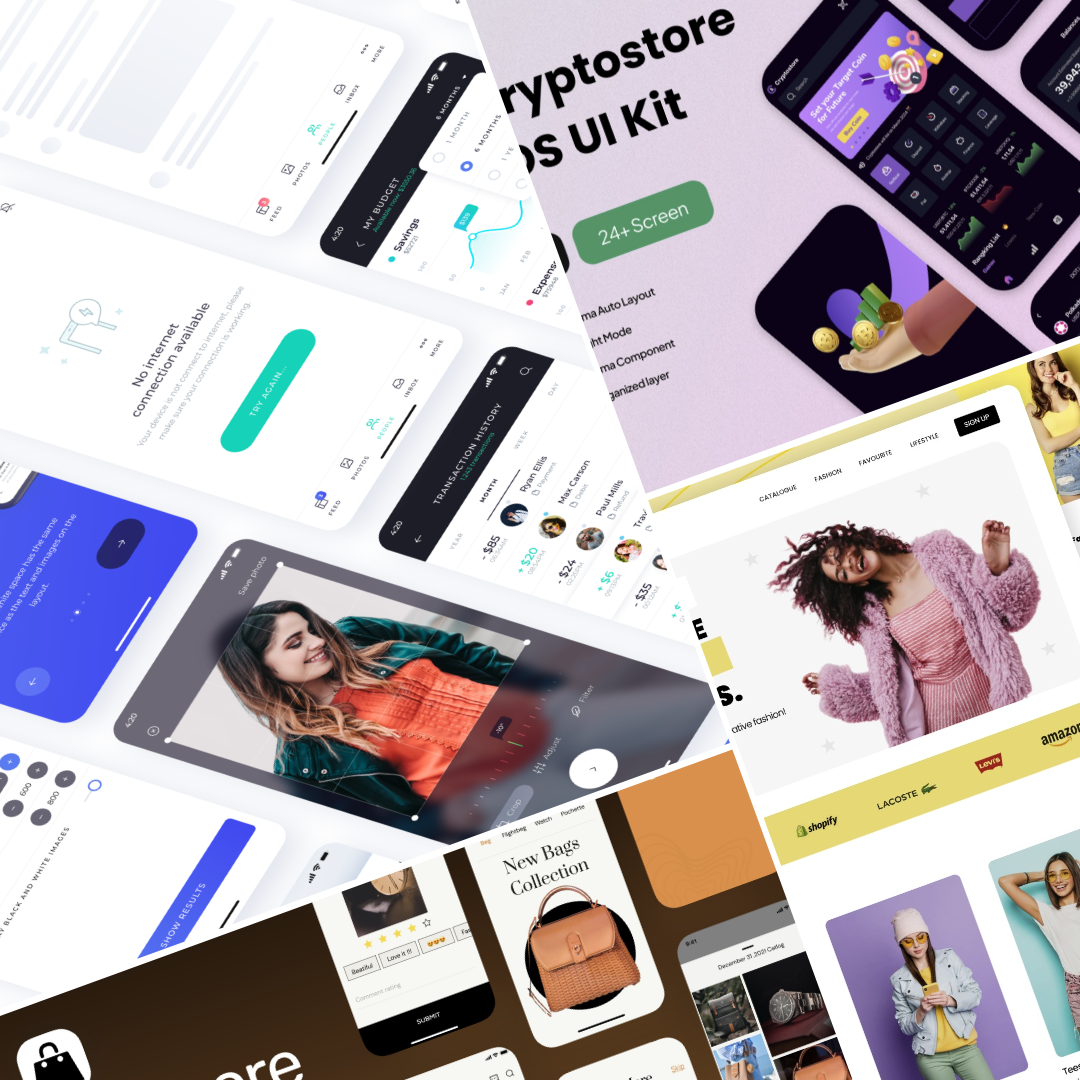In today’s market, branding has become an essential part of any business. It defines how customers perceive your company, products, and services. A strong brand identity can help you stand out in a competitive market and increase customer loyalty. One of the most important aspects of branding is graphic design. In this blog post, we’ll discuss how you can use graphic design to enhance your branding and make your business more successful.
Importance of Graphic Design in Branding
Graphic design plays a critical role in building a brand identity. It helps businesses communicate their values, personality, and message to their target audience. A well-designed logo, website, packaging, and marketing materials can create a strong visual impact and make a lasting impression on customers. Graphic design can also help you differentiate your brand from competitors, establish a consistent visual language, and evoke emotions that resonate with your audience.

Tips for Using Graphic Design to Enhance Your Branding
Define Your Brand Identity:
Before you start designing, you need to define your brand identity. This includes your brand mission, vision, values, personality, and target audience. Your brand identity should be reflected in all your graphic design elements to create a cohesive and consistent image. Your brand identity can make or break your branding strategy. Therefore, it is essential to spend enough time to define your brand identity.
Use Color Psychology:
Colors have a profound impact on human emotions and behavior. Choose colors that reflect your brand personality and message. For example, blue is associated with trust and reliability, red with passion and energy, and green with nature and sustainability. It is important to choose colors that are appropriate to your brand and resonate with your target audience.
Keep it Simple:
Simple designs are more effective than complex ones. A cluttered design can confuse customers and dilute your message. Use clean lines, minimalistic typography, and negative space to create a clear and concise design that communicates your brand message. It is important to keep in mind that simplicity is key when it comes to design. A simple design can make a big impact and help your brand stand out from the rest.
Consistency is Key:
Consistency is key when it comes to branding. Your design elements should be consistent across all channels and platforms to create a strong brand identity. This includes your website, social media profiles, marketing materials, and even your packaging. Consistency can help customers recognize and remember your brand, which can increase brand loyalty and drive sales.
Hire a Professional:
If you’re not confident in your design skills, it’s best to hire a professional. A professional graphic designer can help you create a strong brand identity that resonates with your target audience. They have the knowledge, tools, and expertise to create designs that are visually appealing and effective in communicating your brand message. Investing in a professional designer can save you time and money in the long run.
User Experience (UX): The Impact of Graphic Design on Positive Brand Impressions
User Experience (UX) is a critical factor in shaping how customers interact with a brand’s digital or physical products. It encompasses the overall experience users have while navigating websites, mobile apps, or engaging with physical products. Graphic design plays a central role in UX by visually communicating information, guiding users, and creating an emotional connection that enhances brand perception. Let’s explore the importance of user-friendly interfaces and intuitive navigation through three detailed examples:
Website Design: Enhancing Engagement and Accessibility
A well-designed website creates a positive first impression and encourages users to explore further. Graphic design elements such as layout, typography, color schemes, and imagery significantly impact user experience. For instance, using clear and legible fonts, contrasting colors for call-to-action buttons, and appealing visuals can improve the readability and usability of the website. A responsive design that adapts to various devices ensures accessibility for users across different platforms. By employing thoughtful graphic design, brands can create a seamless browsing experience, leading to increased engagement and a higher likelihood of conversions.
Example:
Airbnb revamped its website with a user-centric approach. They employed graphic design to showcase high-quality images of properties, offer intuitive search filters, and display user reviews prominently. This not only enhanced the visual appeal but also made the booking process effortless and enjoyable for users. As a result, Airbnb witnessed significant growth in user engagement and bookings.
Mobile App Design: Simplifying Interactions and Functionality
Mobile apps have become an integral part of our daily lives, and graphic design significantly impacts how users interact with them. In this context, designers focus on creating intuitive navigation, easy-to-understand icons, and a visually appealing interface. Clutter-free layouts, well-defined hierarchies, and smooth transitions enhance the overall experience. By simplifying interactions and optimizing visual elements, brands can foster a positive emotional response and brand loyalty among app users.
Example:
Duolingo, the language-learning app, excels in using graphic design to create a user-friendly experience. Its intuitive interface employs vibrant colors, delightful illustrations, and gamified interactions. Users find it enjoyable to progress through language lessons, earning rewards and tracking their achievements, which keeps them motivated and engaged in the learning process.
Physical Product Design: Building Emotional Connections
Graphic design extends beyond the digital realm and influences physical products as well. From packaging design to product labeling, every visual aspect contributes to the overall user experience. Thoughtful product design can evoke emotions and create memorable brand interactions. Unique and visually appealing packaging can make a product stand out on shelves, leading to increased consumer interest and brand recognition.
Example:
Apple, renowned for its minimalist and elegant product designs, demonstrates the power of graphic design in creating emotional connections. Their packaging showcases simplicity, sophistication, and attention to detail, which resonates with their brand ethos. The unboxing experience itself becomes an event, heightening the anticipation and reinforcing the premium image of Apple products.
In conclusion, graphic design plays a pivotal role in shaping user experience and creating positive brand impressions. By focusing on user-friendly interfaces, intuitive navigation, and emotionally resonant visuals, businesses can elevate their brands and foster long-term customer loyalty. The three examples provided demonstrate how strategic creativity in graphic design can transform the way users perceive and engage with brands across websites, mobile apps, and physical products.
The Power of Graphic Design: Transforming Brands Through Strategic Creativity (Case Studies)

Case Study 1: Branding Reinvented – Airbnb’s Evolving Identity
Challenge: In 2014, Airbnb faced the challenge of rebranding itself to appeal to a broader audience and convey its core values of belonging, inclusivity, and a sense of community. The existing logo and branding lacked emotional connection and struggled to resonate with users beyond the initial novelty.
Solution: Airbnb collaborated with the design firm DesignStudio to revamp its branding. The result was a powerful identity centered around the concept of “Belong Anywhere.” The new logo, known as the “Bélo,” resembled a heart, a location pin, and a letter “A” combined. The design aimed to represent love, location, and Airbnb’s aspiration to be a global platform.
Impact: The new branding successfully portrayed Airbnb’s values, generating a sense of trust and belonging among users. The “Bélo” became instantly recognizable, fostering a strong community identity. Airbnb’s rebranding exemplifies how graphic design can revitalize a brand, trigger emotional connections, and reinforce the brand’s message.
Case Study 2: Nike’s Iconic Swoosh – Simplicity at Its Best
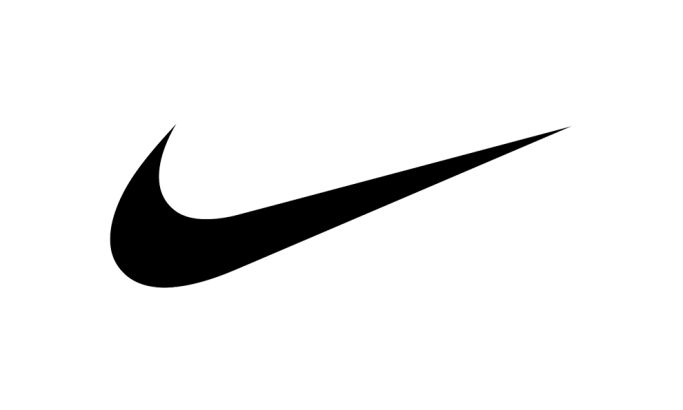
Challenge: In the 1970s, Nike sought to establish itself as a prominent sports apparel brand in a highly competitive market. The challenge was to create an iconic logo that could embody the brand’s vision of excellence, athleticism, and determination.
Solution: Nike’s co-founder, Phil Knight, commissioned graphic design student Carolyn Davidson to create the logo. The now-famous “Swoosh” was inspired by the Greek winged goddess of victory, Nike. The simple, fluid design represented motion, speed, and grace – qualities essential in sports.
Impact: The Nike Swoosh became one of the most recognizable logos globally and an enduring symbol of athletic achievement. Its simplicity and versatility allowed it to adapt to various branding elements seamlessly. Nike’s logo demonstrates how a minimalist design can transcend time and cultural boundaries, becoming a timeless and powerful representation of a brand.
Case Study 3: Coca-Cola’s Share a Coke Campaign – Personalizing a Global Brand
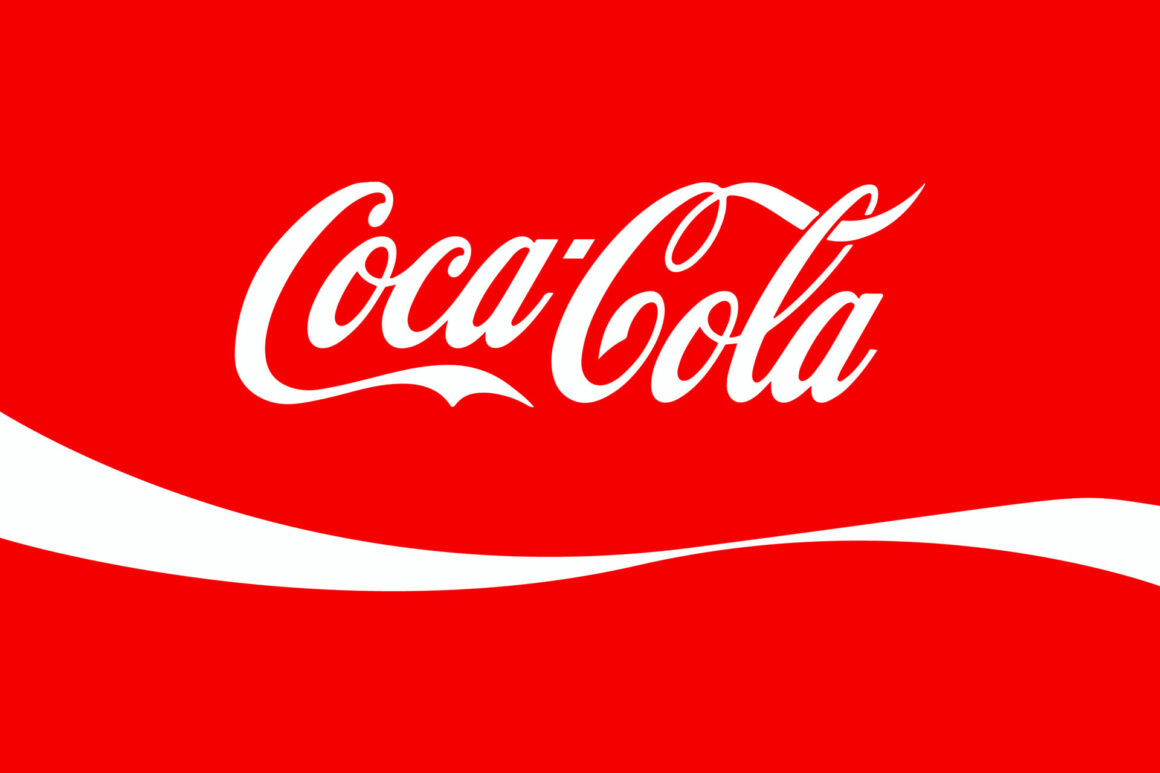
Challenge: Coca-Cola, a globally recognized brand, faced the challenge of revitalizing its marketing strategy to stay relevant and connect with the millennial generation in a digital age.
Solution: In 2011, Coca-Cola launched the “Share a Coke” campaign, replacing its logo with popular names and terms. The company produced personalized bottles and cans, encouraging people to find and share beverages with their names or the names of loved ones. The design focused on creating a personal connection between the product and consumers.
Impact: The “Share a Coke” campaign was a massive success, leading to increased sales and engagement. The personalized approach resonated with consumers, igniting a social media frenzy with people sharing photos of their named bottles. The campaign showcased the power of graphic design to evoke emotions, drive social sharing, and strengthen brand loyalty.
These case studies illustrate how strategic graphic design choices can transform a brand’s identity, evoke emotions, and drive exceptional results in the competitive market. Each unique approach highlights the importance of understanding a brand’s values and target audience to create powerful and memorable visual experiences.
Final Conclusion
Graphic design is a powerful tool for enhancing your branding and creating a strong visual identity. It can help you differentiate your brand, evoke emotions, and communicate your message to your target audience. By following these tips and incorporating graphic design into your branding strategy, you can create a lasting impression on customers and stand out in a competitive market. Remember, your brand identity is the face of your business, and graphic design plays a crucial role in shaping that identity.


